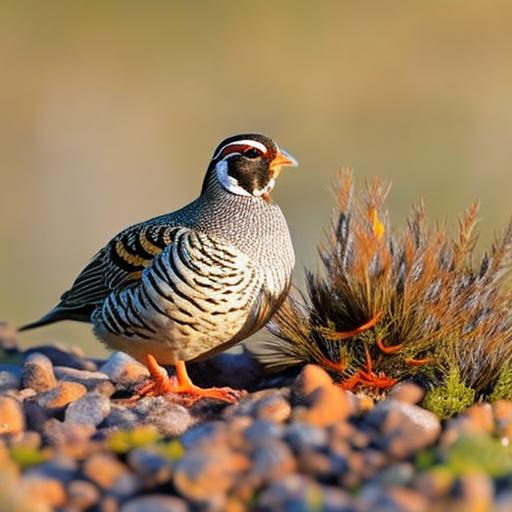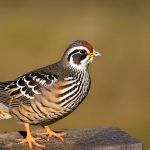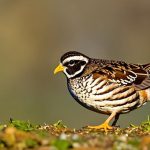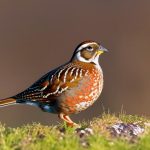Quails are small, ground-dwelling birds that are popular for their delicious eggs and meat. When it comes to raising quails, it’s important to understand their specific needs in order to provide them with a healthy and comfortable living environment. Quails are social birds and thrive in groups, so it’s best to keep them in pairs or small flocks. They also require a spacious living area to roam and forage, as they are active birds that enjoy scratching and pecking at the ground. Additionally, quails need protection from predators and the elements, so providing them with proper shelter is essential. Understanding these basic needs will help ensure that your quails are happy and healthy.
Quails are also sensitive to temperature changes, so it’s important to provide them with a warm and dry living space. They are susceptible to cold weather and can suffer from frostbite if not properly protected. In addition, quails need access to clean water and a balanced diet to maintain their health and well-being. By understanding and meeting these basic needs, you can create a comfortable and nurturing environment for your quails to thrive.
Key Takeaways
- Quail need a warm and dry environment with proper ventilation to thrive.
- The shelter for quail should be well-ventilated, predator-proof, and spacious enough to accommodate the flock.
- Heat lamps or heating pads can be used to maintain the ideal temperature for quail, especially during colder months.
- Insulating the quail’s living space can help regulate temperature and reduce energy costs.
- Bedding material such as straw or wood shavings can provide insulation and comfort for quail.
Providing Proper Shelter
When it comes to providing shelter for your quails, there are a few key factors to consider. First and foremost, the shelter should be spacious enough to accommodate the number of quails you have, allowing them to move around freely and engage in natural behaviors such as scratching and dust bathing. The shelter should also provide protection from predators, such as raccoons, foxes, and birds of prey, as well as from the elements, including wind, rain, and extreme temperatures.
In addition to size and protection, the shelter should also be well-ventilated to ensure good air circulation and prevent the buildup of moisture, which can lead to respiratory issues for the quails. It’s also important to keep the shelter clean and free of droppings and debris, as a clean environment is essential for the health of the quails. By providing proper shelter for your quails, you can create a safe and comfortable living space that meets their basic needs.
Using Heat Lamps or Heating Pads
Quails are sensitive to temperature changes and require a warm living environment, especially during the colder months. To provide them with the necessary warmth, heat lamps or heating pads can be used in their shelter. Heat lamps are a popular choice for providing supplemental heat, as they emit radiant heat that warms the surrounding area. When using heat lamps, it’s important to position them at a safe distance from the quails to prevent overheating or burns. Heating pads are another option for providing warmth, as they can be placed under the bedding material to create a cozy and comfortable living space for the quails.
It’s important to monitor the temperature in the quail’s shelter regularly to ensure that it remains within the appropriate range for their comfort and well-being. By using heat lamps or heating pads, you can help regulate the temperature in the quail’s living space and provide them with the warmth they need to thrive.
Insulating the Quail’s Living Space
In addition to using heat lamps or heating pads, insulating the quail’s living space can help maintain a comfortable temperature for them, especially during the colder months. Insulation can help retain heat and prevent drafts, creating a cozy environment for the quails. There are several options for insulating the shelter, including adding insulation material to the walls and roof, sealing any gaps or cracks where cold air could enter, and using draft guards around doors and windows.
It’s important to choose insulation materials that are safe for the quails and won’t pose a health risk if ingested. Additionally, it’s important to regularly inspect the insulation for any signs of wear or damage and replace it as needed. By insulating the quail’s living space, you can help create a warm and comfortable environment that meets their specific needs.
Using Bedding Material
Bedding material is an essential component of the quail’s living space, as it provides comfort, absorbs moisture, and helps maintain cleanliness. There are several options for bedding material, including straw, wood shavings, shredded paper, or sand. When choosing bedding material, it’s important to consider factors such as absorbency, odor control, and safety for the quails.
The bedding material should be kept clean and dry, as damp bedding can lead to health issues for the quails. It’s important to regularly replace soiled bedding and clean the entire living space to maintain a healthy environment for the quails. By using suitable bedding material and keeping it clean, you can provide your quails with a comfortable and hygienic living space.
Providing Warm Water and Food

Quails require access to clean water and a balanced diet to maintain their health and well-being. It’s important to provide them with warm water during colder months to prevent it from freezing. This can be achieved by using heated waterers or regularly replacing the water with warm water throughout the day. Additionally, it’s important to ensure that the water is clean and free of contaminants to prevent illness in the quails.
In terms of food, quails require a diet that is high in protein to support their growth and egg production. This can be achieved by providing them with a commercial game bird feed or a mix of grains and seeds. It’s important to monitor their food intake and adjust their diet as needed based on their age, activity level, and overall health. By providing warm water and a balanced diet, you can help ensure that your quails are well-nourished and healthy.
Monitoring Temperature Changes
Monitoring temperature changes in the quail’s living space is essential for their health and well-being. It’s important to regularly check the temperature using a thermometer and make adjustments as needed to maintain a comfortable environment for the quails. This is especially important during extreme weather conditions, such as heatwaves or cold snaps.
In addition to using heat lamps or heating pads, insulating the living space, and providing warm water, monitoring temperature changes can help ensure that the quails are safe from temperature-related health issues such as heat stress or frostbite. By staying vigilant and proactive in monitoring temperature changes, you can provide your quails with a safe and comfortable living environment year-round.
In conclusion, understanding and meeting the specific needs of quails is essential for their health and well-being. By providing proper shelter, using heat lamps or heating pads, insulating their living space, using suitable bedding material, providing warm water and food, and monitoring temperature changes, you can create a comfortable and nurturing environment for your quails to thrive. With proper care and attention to their needs, you can enjoy raising healthy and happy quails on your property.
If you’re looking for tips on how to keep quails warm during the colder months, you might also be interested in learning about the incubation period for goose eggs. Understanding the specific needs of different poultry species can help you create a more comfortable and productive environment for your birds. Check out this informative article on what is the incubation period for goose eggs to expand your knowledge and improve your poultry care practices.
FAQs
What are some ways to keep quails warm?
Some ways to keep quails warm include providing them with a well-insulated coop, using heat lamps or heating pads, and ensuring they have access to plenty of bedding for insulation.
What temperature is ideal for quails?
Quails are comfortable in temperatures ranging from 50 to 75 degrees Fahrenheit. It’s important to monitor the temperature in their environment and make adjustments as needed to keep them within this range.
How can I insulate my quail coop?
You can insulate your quail coop by using materials such as straw, hay, or wood shavings for bedding. Additionally, you can add insulation to the walls and roof of the coop to help retain heat.
Are there specific breeds of quails that are more cold-resistant?
Some quail breeds, such as the Coturnix quail, are known to be more cold-resistant than others. When choosing quail breeds, it’s important to consider the climate in which they will be kept.
What are the risks of quails getting too cold?
Quails that are exposed to cold temperatures for extended periods of time are at risk of hypothermia, decreased egg production, and even death. It’s important to take measures to keep quails warm to prevent these risks.
Meet Walter, the feathered-friend fanatic of Florida! Nestled in the sunshine state, Walter struts through life with his feathered companions, clucking his way to happiness. With a coop that’s fancier than a five-star hotel, he’s the Don Juan of the chicken world. When he’s not teaching his hens to do the cha-cha, you’ll find him in a heated debate with his prized rooster, Sir Clucks-a-Lot. Walter’s poultry passion is no yolk; he’s the sunny-side-up guy you never knew you needed in your flock of friends!







